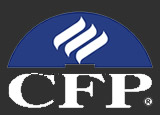March 19, 2019
On March 2, 2009, just over ten years ago the Dow Jones Industrial Average hit 6,626, the S&P500 was around 700 and the NASDAQ closed around 1,293. In 2009 I had been an advisor for about 4 years and oh how I longed to be a State Trooper again! I had in fact just completed my purchase of Chesapeake Investment Advisors so there was no turning back.
I remember walking across the quadrangle in Chestertown toward my favorite lunch spot (The Old Mill Deli) thinking how easier my life was with the Maryland State Police. Of course, I wasn’t working the road at the end of my career—I was a Captain and Captains don’t put their lives in jeopardy as Road Troopers do. Captains are Admin and for the most part, do very boring stuff.
Similarly, Captains also don’t speak of the wonders and the opportunities of investing only to watch the markets basically halve themselves in a year. There’s nothing quite like inspiring your client to invest their hard earned money for the “long term” and then watch the value drop, relentlessly, day after day after day. In 2009 I would have taken a high-risk traffic stop in the middle of dark and lonely road any day of the week over watching that market. The good news was bad, the bad news was bad, just about any news was bad! And it all caused a market drop.
That was ten years ago and it’s easy to forget how disheartening that period was, but look at these numbers again:
March 2, 2009
DJIA 6,626
S&P 701
NASDAQ 1,293
Compared to where we are as of March 18, 2019:
DJIA 25,987
S&P 2,847
NASDAQ 7,474
So, of course, things turned out okay and we should have been buying stocks hand over fist. But everyone has perfect eyesight looking at the past. In 2008 and 2009 our vision was just a bit cloudy. Most traders and investors (except perhaps Warren Buffet) were reluctant to buy ANYTHING!
Now that our vision has cleared we should have learned a few of key points over those ten years. First, it has been said that more money has been lost by being out of the markets than being in the markets and the past decade certainly proved that. Any investor who left the market for “safety” missed out on tremendous growth opportunity.
Secondly, we should never forget that market movements do not always reflect what’s happening in the real economy. Innovation, ingenuity and the free-market will always find a way through the muddle. Always! For example, the unsung hero of this past decade were oil drillers. Since 2009 the USA went from being import-dependent for oil to being the world’s largest producer of oil. Larger than Russia and Saudi Arabia. The State of Texas alone is the world’s 5th largest producer of oil—having just passed Iran.
Then there is technology. Since 2009 our Star-tac Flip-phones have evolved into the handheld computers we use today. With a touch of the screen we can summons a complete stranger to drive by, pick you up, and drop you off 300 yards down the street (for a small fee) and give you a bottle of water to boot. In a glimpse of things to come, Budweiser recently sent a self-driving tractor-trailer from Fort Collins to Colorado Springs (130 miles) loaded with over 50,000 cans of beer. And my 4-year-old grandson in Perry Hall can play an action video game with some kid in Europe, with no delay in the contemporaneous action.
Perhaps the thing we should have learned but apparently did not, is that the 2008-09 Great Recession, or Market Crash, or financial collapse, or whatever you call it, was due in large part to an unintended consequence. It was an unassuming little accounting rule change that was implemented by a private, non-profit organization called the Financial Accounting Standards Board or FASB for short. FASB is a standard-setting body designed to establish and improve the Generally Accepted Accounting Principles (GAAP.) So FASB tries to improve GAAP! Clear as mud, right?
Well, in 2007 FASB thought it would be a grand idea if the country’s accountants would go back in time and resurrect a rule called “Mark-to-Market” for valuing assets. Mark-to-Market was the bookkeeping standard in the 1800s and up until 1938. Mark-to-Market, at the request of President F. Roosevelt, was tossed to the wayside in 1938. Economists in that era believed Mark-to-Market had contributed to many of the recessions and bubbles of the 1800s and the Great Depression of the ’30s.
What is Mark-to-Market? It is an accounting process that values assets by what it will sell for at the moment—in a market-place. The problem arises when there is any slightest bit of panic in the market—which we are apt to experience on average at least once every year. The Mark-to-Market, second-by-second revaluing of your asset based on the irrational sale of it by some timid investor anywhere from here to Timbuktu is in itself irrational.
Here’s an example; let’s say you own a 20-year Bond of XYZ Company and it’s paying you 4% annually. You’re ecstatic with the results and more than content with your 4% for 20 years. This is exactly why you bought it, a steady income over the next 20 years. Now, if some over-extended investor in an irrational panic talks himself into selling a part of the same bond at the worst possible moment for a 20% discount to par—then your asset–on your balance sheet—drops by 20%.
So far so good—if it drops by 20% you should be fine. But that 20% discount to par was not seen as a buying opportunity during 2008, it was seen as a weakness in the XYZ company. Then some other timid soul sells his now reduced bond at 30% discount—and so on and so on until, your perfectly fine little bond is selling for 25 cents on the dollar. And guess what, instead of you owning an asset that is performing as designed, making you 4% for the next 20 years, it looks to the rest of the world like a drunk, tap-dancing in heavy traffic. All of a sudden your balance sheet is in question—why the heck are you holding this junk bond in your portfolio? And if you’re a bank or bond fund, your stake-holders wonder why you held onto this obviously flawed asset. Among other idiotic things, this was happening in the fall of 2008. And companies, large and small were losing their shirts. Many were going out of business as a result of panic and Mark-to-Market valuations that were, to say the least, unrealistic.
A great analogy by Economist Brian Wesbury (in the Tedx Talk video[i] linked below) goes something like this: You own a $500,000 home on the water in Galveston, Texas—a hurricane is just four or five hours offshore and is heading your way. You have a $300K mortgage and just as you are running out of your front door to evacuate, the mortgage company representative arrives and asks you the value of your home at that very moment. There are no realtors or appraisers around, just some firefighter on the back of a firetruck. You ask the firefighter, hey buddy, what’s my house worth? He sheepishly says he will give you $20,000 for it—cash right now. The banker then holds out his hand and asks you for the balance of $280K that you owe. Your loan has been called since its value is more than the market “value” of your collateral.
The Financial Accounting Standards Board (FASB) changed to Mark-to-Market in 2007 to ostensibly protect the public investor. A solution looking for a problem. And, in my opinion, when the very next run-of-the-mill market correction came along it exploded into, fueled by waves of panic, the 2008-09 debacle known as the Great Recession.
The Mark-to-Market rule would last until March 2009, when Barney Frank, the US Representative from Massachusetts and Chairman of the Financial Services Committee convinced the FASB to suspend the rule starting in April 2009. In the end, common sense prevailed and abolishing the rule changed everything. The markets and the economy never turned back and the rest is history. Correlation does not necessarily mean causation but isn’t it quite a coincidence that Mark-to-Market put into play in 2007, and put to rest in 2009–bracketed the recession?
For a much better and infinitely more interesting presentation on this, here is the link to Brian S. Wesbury’s TEDx video.
https://www.youtube.com/watch?v=RrFSO62p0jk&list=LL4N72eevOoIMuFbdbSsYMwA&index=5&t=0s
Thank you for reading.
Marty
[i] https://www.youtube.com/watch?v=RrFSO62p0jk&list=LL4N72eevOoIMuFbdbSsYMwA&index=5&t=0s


